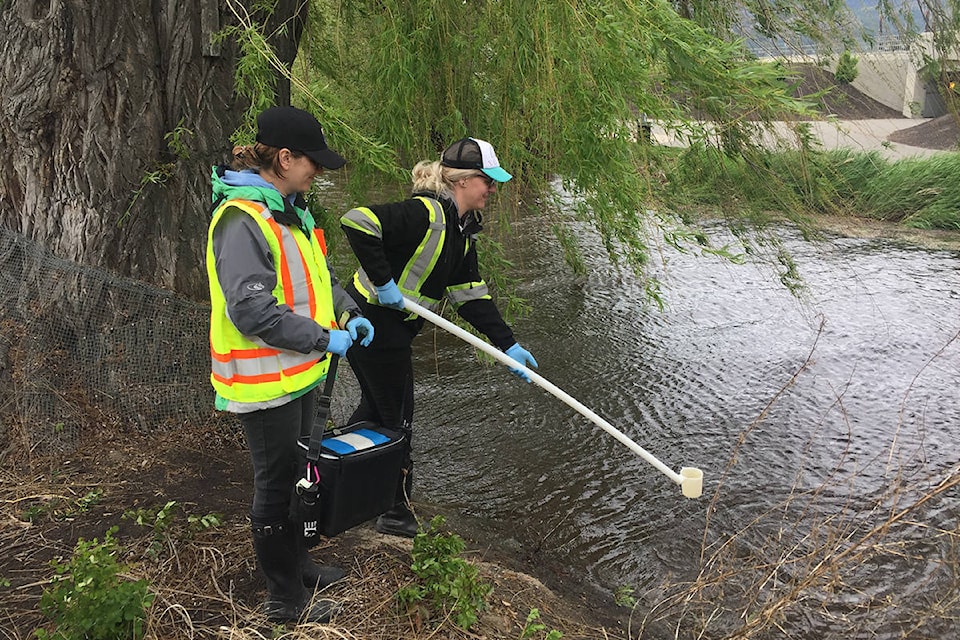Not only is the level of Okanagan Lake rising quickly, the quality of the water going into the lake from some of its major sources is plummeting.
According to the City of Kelowna, which is now testing water flowing out of both Mission Creek and Mill Creek into the lake on a daily basis as opposed to weekly, turbidity levels have shot up over the last seven days.
Ed Hoppe, water quality supervisor for the City of Kelowna, said Wednesday the turbidity level tested at the mouth of Mill Creek was nearly three times higher on Wednesday than it was just a week ago.
The city regularly tests the water flowing into Okanagan Lake, in part, because its water utility gets its supply from the lake.
Kelowna’s water system is currently under a water quality advisory because of the higher-than-normal turbidity levels and the advisory will remain in place until the levels subside. The advisory went into effect May 12.
The city has four water intakes on the lake and currently treats its water with both ultra-violet light and chlorination.
Water washing down Mission Creek and Mill Creek, two of the largest sources of water for Okanagan Lake, are raising the lake by an estimated three to four centimetres each day. On Tuesday night, during a severe windstorm that whipped up lake waters and created waves that pushed over flood protection measures in some lakeshore areas, the level of the lake rose rise 4.5 centimetres over night. The lake level is now just five centimetres below the record high of 343 metres set in 1948.
Hoppe said given the conditions, first with area creeks and then with the lake itself, the city started testing water quality daily two weeks ago. He said over the next few days additional testing will indicate if elevated turbidity recorded Wednesday is just a spike or a new normal.
Typically, at this time of year, turbidity in Mill Creek is recorded at about 34 NTU—where it was last week. On Wednesday, it was recorded at 110 NTU.
For more information about the water quality advisories in all water supply jurisdictions in the city—there are five major purveyors—and a host of other related information, go to kelownajointwatercommittee.ca.
